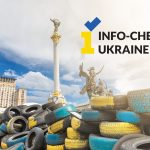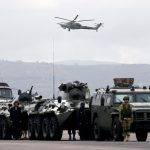RUSSIA MONITOR
Date: 10 May 2017
Peace the Russian Way
The more details on Russia’s plan to create security zones in Syria come to light, the more true appear original fears that the project’s aim is to strengthen Moscow’s ally, Bashar al-Assad. Yet again, this is a Russian political initiative which, rather than making peace in Syria, will more likely be used by the Kremlin as propaganda only. The Americans seem to share these concerns and delay a clear position on such zones.

Issues associated with the agreement are to be addressed on 10 May at the Washington meeting of US Secretary of State, Rex Tillerson, and Russia’s Foreign Minister, Sergey Lavrov. The Chairman of the Joint Chiefs of Staff, Gen. Joseph Dunford, discussed the security zones with Valery Gerasimov, Chief of the General Staff of the Armed Forces of Russia, on 7 May. Still, many questions on various details remain unanswered, the Pentagon chief said on 8 May. Jim Mattis declared that the US will thoroughly examine the Russian proposal to create several so-called security zones in Syria. The defence secretary also said, however, that the plan fails to address many issues, like the exact locations of zone boundaries and who will be in charge of their security.
In fact, the latter question was answered on the very same day by Syria’s foreign minister. Walid Muallem said that it would be Russian troops and not international forces under UN auspices that would oversee the ceasefire in zones created as a result of the agreement advocated by Moscow. Assad’s top diplomat emphasised that Damascus will not agree to accept any other foreign forces to monitor the truce, humanitarian aid supplies and other kinds of activities within the security zones. “The Russian guarantor clearly indicated that its military police and observational centres would be there”, Muallem said.
While the Kremlin opposes deployment of the Blue Helmets to Syria, earlier this week it moved to the UN Security Council to pass a resolution in support of the agreement on security zones. The resolution’s wording is currently negotiated by Council Members. Ultimately, the zones are to be created in early June. Syria’s minister announced, however, that their creation will not prevent government forces from responding “resolutely” to any truce violation by the rebels. He already suggested that rebels might not adhere to the provisions of the agreement. Muallem added that his government expects that one of the first steps toward creation of security zones would be for “moderate” rebels to terminate cooperation with “extremists” and push them out of the zones. Otherwise, government aircraft will continue to strike within the zones. Of course, this is yet another of Assad’s conditions which will be difficult to meet by the rebels, since they would have to engage in an open armed conflict with the more radical units. Even in the case of success, the “moderate” forces would be weakened which is, of course, in the interests of the regime. Further, it is becoming increasingly clear that Assad is looking for any pretext to continue, even if security zones and truce are agreed, to attack the rebels also within the zones.
All texts (except images) published by the Warsaw Institute Foundation may be disseminated on condition that their origin is stated.










